As we gather for the second Asian Investigative Journalism Conference, this seems a good time to share again with our colleagues where the Global Investigative Journalism Network and its conferences come from. It was a simple idea at the end of the 20th century — to gather the world’s investigative journalists to share their knowledge with each other — that gave birth to GIJN, which has now grown to 138 member organizations in 62 countries.
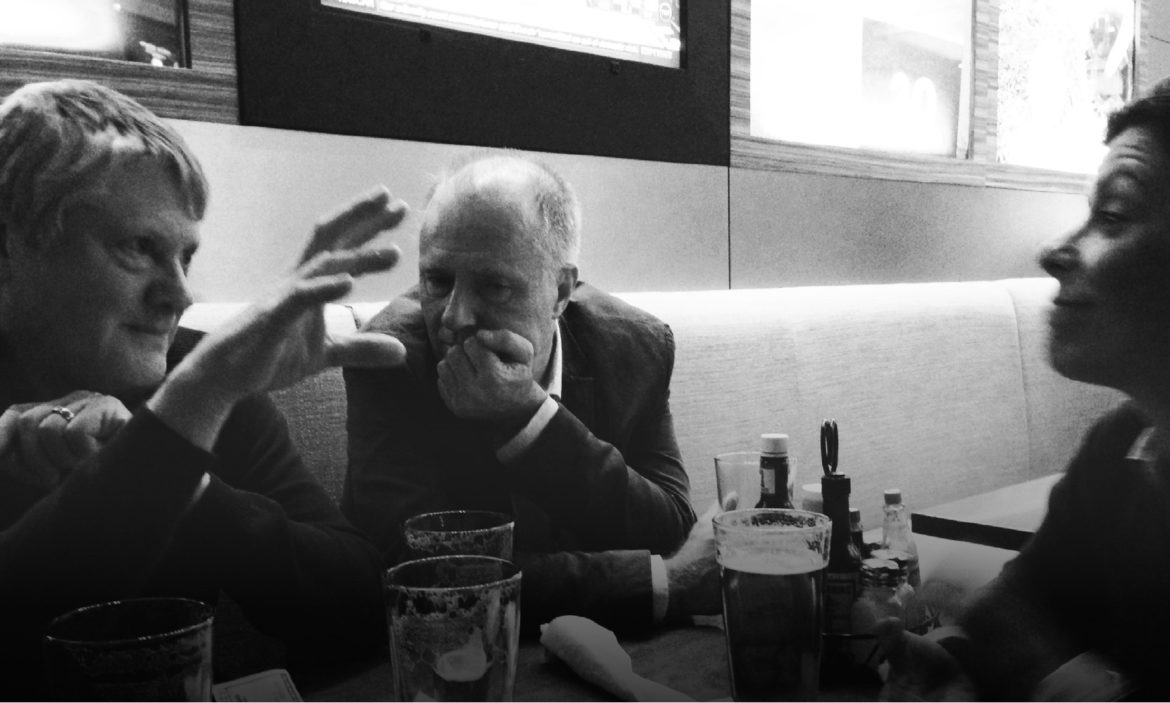
Nils Mulvad (middle) and Brant Houston (left) pondering the world of investigative journalism.
Enjoying a glass of wine at his modest home in Aarhus, Denmark, Nils Mulvad and guest Brant Houston were celebrating the latest gathering of reporters they had brought together. It was the spring of 2000, and they had just hosted nearly a hundred journalists to talk about investigative techniques, with special focus on the fast-growing field of computer-assisted reporting (CAR).
Houston had pioneered CAR back home in Missouri, where he ran Investigative Reporters and Editors, the big U.S.-based association of investigative journalists. IRE’s National Institute of Computer-Assisted Reporting – NICAR — was attracting international interest. Indeed, after Mulvad attended an IRE “boot camp” in 1996, he was bitten by the CAR bug. Returning home, he founded DICAR — the Danish International Center for Analytical Reporting – and was busy introducing data journalism to colleagues across Europe. His annual events were now attracting journalists from a half-dozen countries, and he and Houston were thinking about the future.
“Why don’t we invite the world next time?” Houston asked.
The ground was fertile for such an undertaking. Propelled by globalization, investigative reporting was spreading worldwide, boosted by the Internet, mobile phones, and the end of the Cold War. There was, as yet, no real hub, no central gathering point, for the growing global community of muckrakers. But Houston and Mulvad had no idea if journalists – notorious for being competitive and lone wolves — would even respond to such a call.
Backed by DICAR, IRE, and the Danish Association of Investigative Journalists, Mulvad in 2001 booked Copenhagen’s most famous hotel for an April weekend and hoped for the best. “We figured some people would come, but we really didn’t know,” Houston recalls. “It turned out to be the right event at the right time.”
In all, more than 300 journalists from 40 countries descended upon Copenhagen that weekend, looking for tips, tools, and kindred souls. The atmosphere at times resembled a religious revival, as hard-boiled muckrakers discovered that they were not alone in the world. “Investigative journalists are so much alike, no matter where they’re from and where they work,” says Houston. “There was immediate understanding and immediate bonding. For many, there was a surprise that first day how openly people shared their knowledge. By the second day, it was an accepted practice.”
Those humble beginnings were the start of the Global Investigative Journalism Conference, which will be held for its tenth time next year in Johannesburg, South Africa. Over the years, the conferences have brought together and trained more than 5,000 journalists from 100 countries. In the process, they have played a key role in the rapid spread of investigative and data journalism around the world, raising skill levels, sparking extraordinary collaborations, and helping start dozens of investigative journalism organizations.
““I never imagined it would develop into what it is today,” Mulvad says. “This ended up being the most important thing I’ve contributed to in my career. We didn’t know it at the time. It’s just what happened.”
Two years after that first conference, the team held a second global gathering, again in Copenhagen. The 9/11 attacks and a global security crackdown put a damper on participation, making travel difficult, but still some 300 came, and the excitement remained. Houston and Mulvad were convinced that what they were seeing – the skills sharing, the hunger for training, the collaborative spirit — was no accident. “Everybody wanted to stay in touch between conferences,” Houston says, “and we wanted to make sure we had an ongoing network.” They drafted a statement of principles and convened a meeting at the conference to launch an informal association.
The organizing statement was simple and straightforward: They would form a network “of independent journalism organizations that support the training and sharing of information among journalists in investigative and computer-assisted reporting.” The goals of the new group: to organize conferences and workshops; help form and sustain investigative and data journalism organizations; support and promote best practices; help ensure access to public documents and data; and provide resources and networking services for investigative journalists worldwide.
Membership was limited to nonprofit organizations or their equivalent around the world. The reason: While commercial media certainly have played an important role in investigative reporting, it is the nonprofits that have done much of the training, teaching, mentoring, and skills-sharing that have spread it around the world.
In all, 35 organizations from 22 countries signed the founding document. More than two-thirds were from Europe, but the list included groups pioneering investigative journalism around the world: associations in Brazil, Germany, the Netherlands, Scandinavia, South Africa, and the United States, and reporting centers in Ghana, the Philippines, Nepal, and Romania. There were a handful of schools and training institutes, a media development NGO, and a then-little-known cross-border consortium called ICIJ. IRE contributed a listserv (which remains a vital link in our community) but there was no funding and no central organization.
They called themselves the Global Investigative Journalism Network, or GIJN.
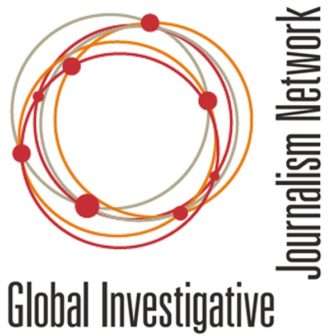 GIJN functioned as a loose-knit support system to the global conferences, which, starting with Amsterdam in 2005, would be held every 18 to 24 months. Sponsored by VVOJ, the Dutch-Flemish Association of Investigative Journalists, the Amsterdam event again attracted hundreds of journalists from around the world. That was followed by successful conferences in Toronto in 2007, organized by the Canadian Association of Journalists; in Lillehammer in 2008, by SKUP, Norway’s investigative journalism association; and in Geneva in 2010, by the Swiss Investigative Reporters Network.
GIJN functioned as a loose-knit support system to the global conferences, which, starting with Amsterdam in 2005, would be held every 18 to 24 months. Sponsored by VVOJ, the Dutch-Flemish Association of Investigative Journalists, the Amsterdam event again attracted hundreds of journalists from around the world. That was followed by successful conferences in Toronto in 2007, organized by the Canadian Association of Journalists; in Lillehammer in 2008, by SKUP, Norway’s investigative journalism association; and in Geneva in 2010, by the Swiss Investigative Reporters Network.
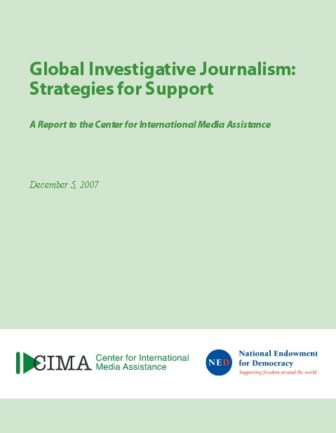 By the sixth conference in Geneva, it was clear the events had grown in size and sophistication. More than 500 journalists from 80 countries now flocked to the big gatherings, many for their third or fourth time. The incipient global community that Houston and Mulvad had foreseen now stretched literally around the world. As commercial media suffered under the double blows of lost advertising and recession, the nonprofits that formed GIJN’s backbone became a model emulated around the world. In 2007, a survey by the Center for International Media Assistance identified 39 nonprofit investigative journalism centers in 26 countries, and that number would double over the next five years.
By the sixth conference in Geneva, it was clear the events had grown in size and sophistication. More than 500 journalists from 80 countries now flocked to the big gatherings, many for their third or fourth time. The incipient global community that Houston and Mulvad had foreseen now stretched literally around the world. As commercial media suffered under the double blows of lost advertising and recession, the nonprofits that formed GIJN’s backbone became a model emulated around the world. In 2007, a survey by the Center for International Media Assistance identified 39 nonprofit investigative journalism centers in 26 countries, and that number would double over the next five years.
In 2010, Houston and Mulvad set up an informal board for GIJN, the Volunteer Group, to help deal with growing demands on the loose-knit network. Conference organizers needed help fundraising and finding great journalists. As stories increasingly led across borders, reporters wanted to know how to reach colleagues on other continents. Frustrated editors wanted to know how to set up their own nonprofits. Others wanted workshops and the latest tips and techniques. And data journalism, once an innovative sideshow, had become red hot; the Global Conferences’ trainers had produced a generation of computer-literate reporters now in high demand.
It was increasingly clear to veterans of the global conferences that more structure would benefit both the global conferences and the global network. In 2011, with the support of Houston, Mulvad, and others, I proposed the formation of a secretariat to manage the many requests coming to GIJN, to support the global conferences, and to further GIJN’s core mission of strengthening investigative journalism around the world. In October 2011, at the seventh global conference in Kiev, Ukraine, representatives of GIJN’s membership held a robust debate and approved setting up a provisional secretariat, which was launched in February 2012.
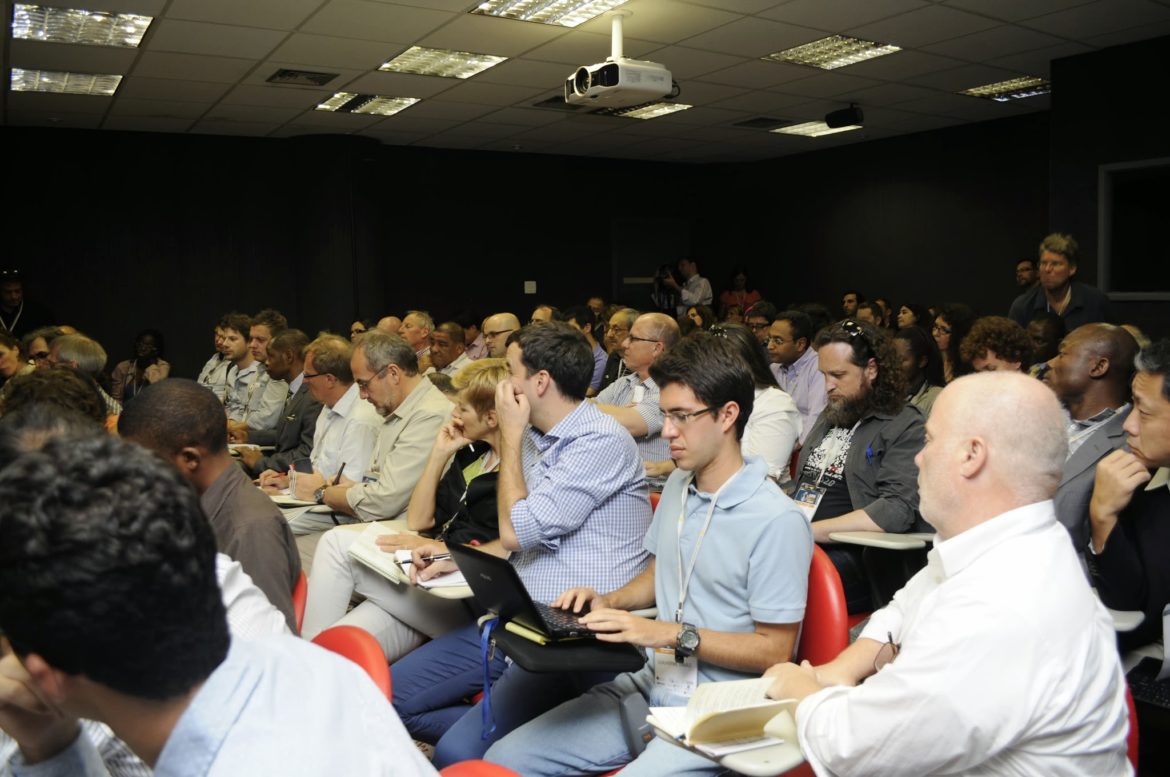
A record crowd in Rio: Some of 1350 participants at GIJC13 in Rio de Janeiro, done with Abraji and IPYS.
I was privileged to be made director of this new initiative. With US$35,000 in seed funding from the Adessium and Open Society foundations, we spent a year laying the groundwork: creating a website with extensive resources, a global calendar, and news on investigative journalism around the world; setting up multiple networking and social media platforms; and launching an ambitious plan to transform GIJN from a largely European and North American network into a truly global one. Our efforts received a big boost with the 2013 Global Conference in Rio de Janeiro, in which the new secretariat partnered with Abraji, Brazil’s dynamic investigative journalism association, to hold the first Global Conference in the developing world. We combined our conference with both Abraji’s annual congress and COLPIN, the Latin American Investigative Journalism Conference. The impact surprised us all. Hoping for a thousand attendees, the Rio conference attracted a record 1350 people from 93 countries.
In Rio, the GIJN membership gave a ringing endorsement to our efforts and, in near-unanimous votes, decided to make the secretariat permanent, to keep the secretariat in one place (voting down a rival proposal to rotate its office), and to appoint me to a three-year term as GIJN’s first executive director.
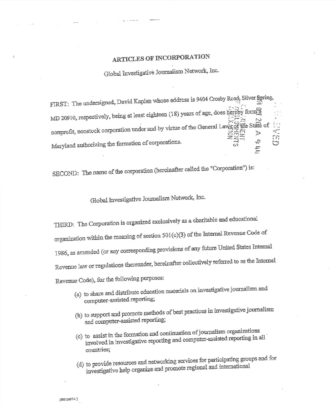 Then in May 2014, following a debate on GIJN’s future, members again overwhelmingly endorsed measures giving GIJN more structure and formal legal status. By then, GIJN had grown to 98 member organizations in 44 countries. In an online election, the members voted by margins of more than 90% to make the Global Network a registered nonprofit in the United States and to create an elected board of directors that ensures geographic representation from six regions. A subsequent vote was held to create GIJN’s first elected board of directors, giving the network a formal governing body with 15 journalists from 11 countries.
Then in May 2014, following a debate on GIJN’s future, members again overwhelmingly endorsed measures giving GIJN more structure and formal legal status. By then, GIJN had grown to 98 member organizations in 44 countries. In an online election, the members voted by margins of more than 90% to make the Global Network a registered nonprofit in the United States and to create an elected board of directors that ensures geographic representation from six regions. A subsequent vote was held to create GIJN’s first elected board of directors, giving the network a formal governing body with 15 journalists from 11 countries.
Today, GIJN has a paid staff of six people and is publishing regularly in English, Chinese, and Spanish. We have nearly 100,000 followers on social media, and a lively website viewed by readers in 90 countries a day. Our membership has nearly tripled to 138 groups in 62 countries. Since setting up the secretariat, we have responded to nearly 3,000 requests for assistance from around the world. In 2014, we co-sponsored Asia’s first Investigative Journalism Conference, attracting 300 journalists from Japan to Pakistan. In 2015 we joined Norway’s SKUP to attract nearly 1,000 journalists to the 9th Global Conference – GIJC15 – attracting attendees from a record 120 countries.
What’s in the future? We are working hard to further internationalize GIJN’s membership. We have initiatives to build up networks tying together journalists worldwide with resources, capacity, and each other. We’re working to strengthen investigative journalism groups across the globe; expand GIJN’s online resource center; increase our capacity to respond to requests for help; and train investigative groups in business skills, fundraising, and revenue diversification.
Our second regional conference in Asia, which takes place this week, is attracting lots of attention as it brings GIJN and the global muckraking movement for the first time to South Asia. With the majority of the world’s population, and dynamic investigative journalists at work from Seoul to Mumbai, Asia has enormous potential for watchdog journalism.
We also are excited by what’s happening in Africa, a fact underscored by our membership voting decisively to hold GIJC17 — the next global conference — in Johannesburg, South Africa. Above all, we are excited about the contribution GIJN and the Global Conferences are making around the world. Every day, we see first-hand the impact our colleagues have by exposing corruption, abuse of power, and lack of accountability. For that, we are grateful to two pioneers who, over a glass of wine a decade ago, had the vision to see what was possible.
“We’ve moved to the next stage,” reflects Brant Houston. “You know you’ve reached the next stage when it’s hard for people to imagine you not existing.”
 This story first appeared in the magazine of the ninth Global Investigative Journalism Conference in Lillehammer, Norway. Thanks to our partners at SKUP, the Norwegian Association of Investigative Journalists, for originally publishing this.
This story first appeared in the magazine of the ninth Global Investigative Journalism Conference in Lillehammer, Norway. Thanks to our partners at SKUP, the Norwegian Association of Investigative Journalists, for originally publishing this.
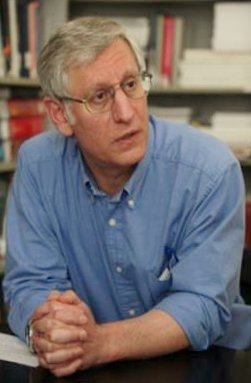 David E. Kaplan is executive director of the Global Investigative Journalism Network. He previously served as director of the International Consortium of Investigative Journalists and chief investigative correspondent at U.S. News & World Report. He has reported from two dozen countries and won or shared more than 25 awards.
David E. Kaplan is executive director of the Global Investigative Journalism Network. He previously served as director of the International Consortium of Investigative Journalists and chief investigative correspondent at U.S. News & World Report. He has reported from two dozen countries and won or shared more than 25 awards.
